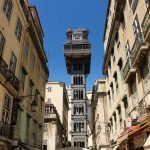Each Lisbon neighborhood feels like its own small world, with unique vibes and sights. And, to really get to know the city, you just have to explore it piece by piece.
The first time I visited Lisbon, I set out to discover all these different parts, walking through streets that seemed to whisper stories of both the past and the present. Every turn brought a new surprise, a different feel.
Even today, years later, I’m still amazed at how each neighborhood blends into the next, like chapters in a book you don’t want to put down. In one moment, you’re in a place full of history, and in the next, you’re back to modern life.
It’s precisely this mix that makes Lisbon so special! That’s why, in this post, I’ll guide you through these unique areas and share what makes each one worth visiting. So, join me and let’s explore the many faces of Lisbon together, one neighborhood at a time.
Index
- Alfama
- Bairro Alto
- Baixa
- Chiado
- Príncipe Real
- Mouraria
- Parque das Nações
- Graça and São Vicente
- Belém
1. Alfama
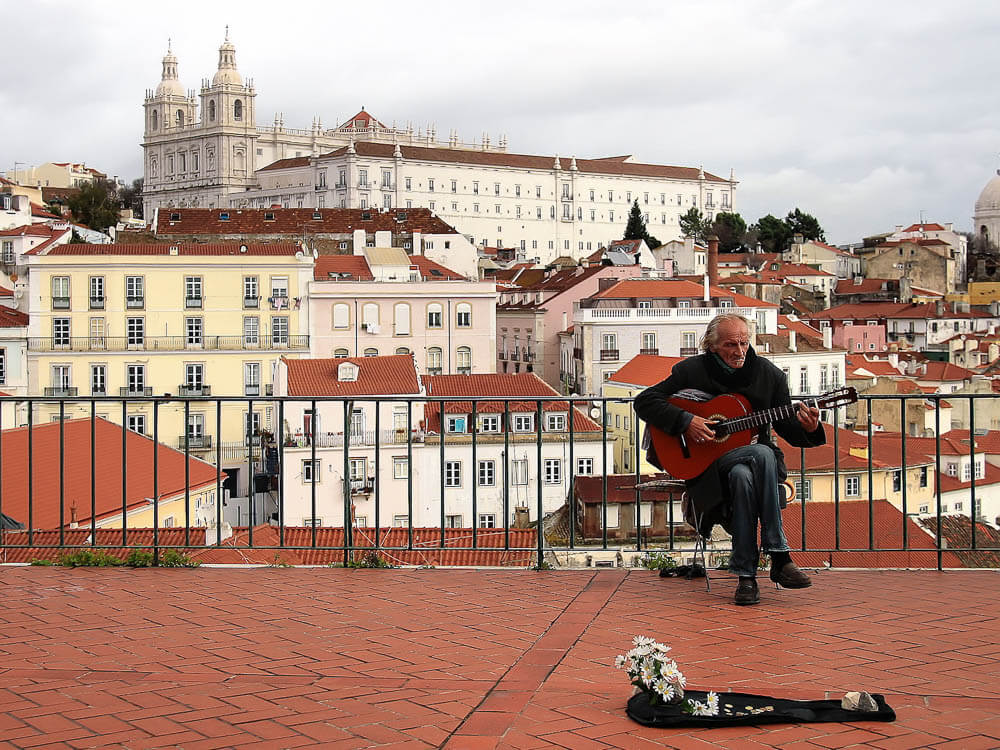
Alfama is Lisbon’s oldest neighborhood, and its historic charm is evident in every cobbled lane and narrow alley. This hilly area is filled with stunning churches, breathtaking viewpoints, and Fado houses. Which, of course, shouldn’t come as a surprise, as Alfama is the birthplace of this soulful music genre.
Despite its central location, Alfama has managed to stay refreshingly authentic, offering a genuine slice of local life. It’s the perfect place to get lost in, discover hidden gems and experience real local food, with many restaurants and bars serving traditional Portuguese dishes.
When you visit Alfama, make sure to check out São Jorge Castle and the ancient Sé Cathedral. The Santo Estevão Church, Mosteiro de São Vicente de Fora, and Santa Engrácia Church are also must-see sites, each with a unique background and architecture.
For those interested in ancient history, the Roman Amphitheater offers a fascinating glimpse into the past. And don’t miss the Santa Luzia viewpoint, which provides panoramic views perfect for capturing the beauty of whitewashed buildings and orange roofs.
2. Bairro Alto
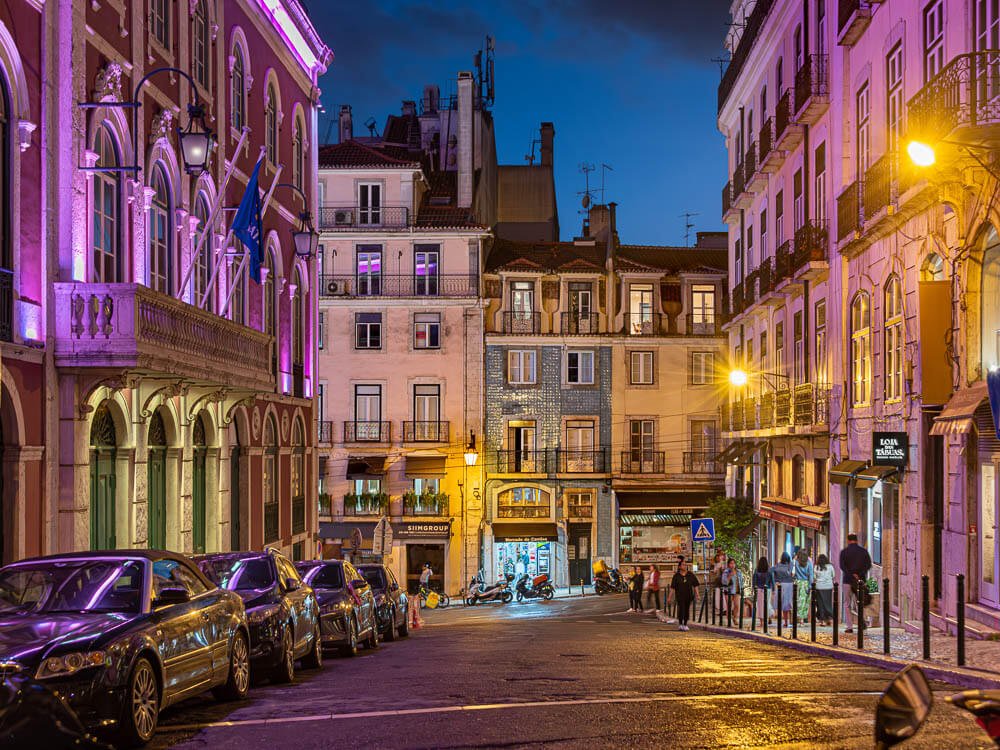
Bairro Alto is Lisbon’s bohemian quarter, a place where old-world charm meets modern vibes. With maze-like lanes and narrow alleys, it kinda resembles Alfama, but with a distinct contemporary twist.
Unlike much of Lisbon, Bairro Alto wasn’t that affected by the 1755 earthquake, and over the years has transformed from a workers’ neighborhood into a hotspot for intellectual and cultural activities. Now, it’s a favorite for both locals and tourists, thanks to its mix of traditional and modern bars, restaurants, and tascas.
If you’re looking to enjoy the nightlife in Lisbon, Bairro Alto is the place to be. It’s one of the best spots in the city for live music, bars, and clubs that stay open late. In fact, if you visit during the day, you’ll find it surprisingly quiet, which doesn’t match its true essence at all!
Besides providing great nightlife options, Bairro Alto also has some charming sights like the Praça Luís de Camões, Santa Catarina Church, Ascensor da Bica and Ascensor da Glória funiculars.
3. Baixa
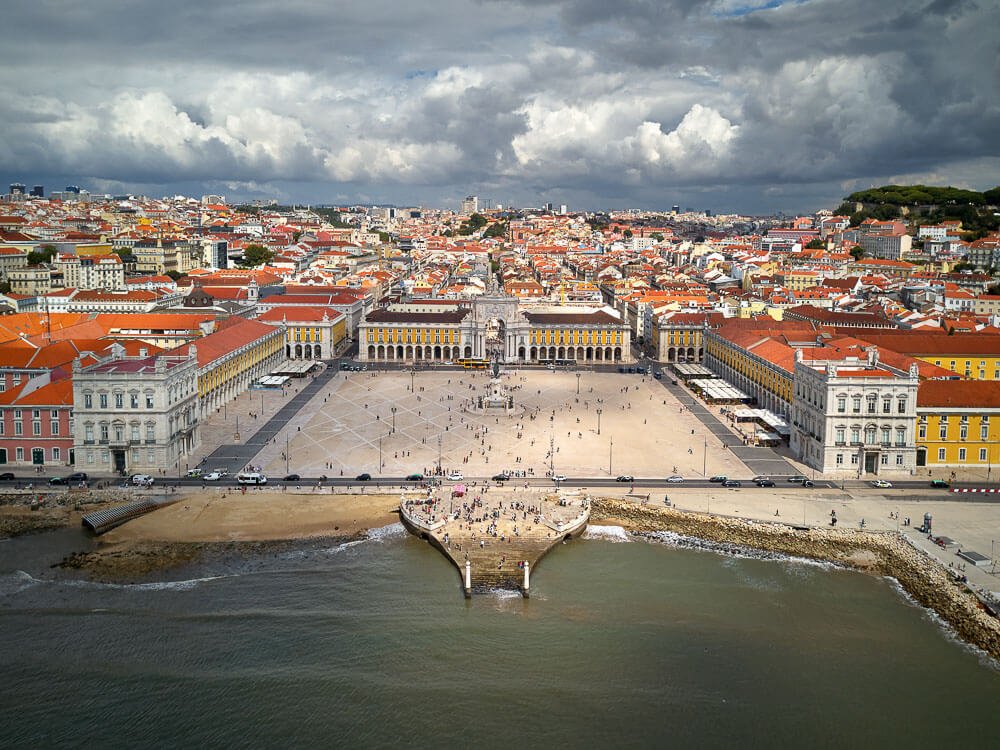
Baixa, often called the heart of Lisbon, is where the city’s commercial and financial pulse beats strongest. After the devastating earthquake of 1755, the Marquis of Pombal meticulously rebuilt this area, giving it a unique character with wide streets and Neoclassical architecture, all laid out in a tidy grid.
The area is mostly pedestrian-friendly, making it easy for tourists to explore on foot, and offers plenty of sightseeing options and dining experiences.
Among Baixa’s main attractions is Praça do Comércio, with its riverside location and grand arches. Then there’s also Praça da Figueira, a lively square surrounded by shops and cafes, and the Elevador de Santa Justa, an iron lift offering stunning views over the city.
It’s a great place for a day out or short stay, but it’s probably not one I’d recommend staying for extended periods. The influx of tourists can sometimes be overwhelming, and the busy commercial vibe might not provide the genuine local experience other neighborhoods offer.
4. Chiado
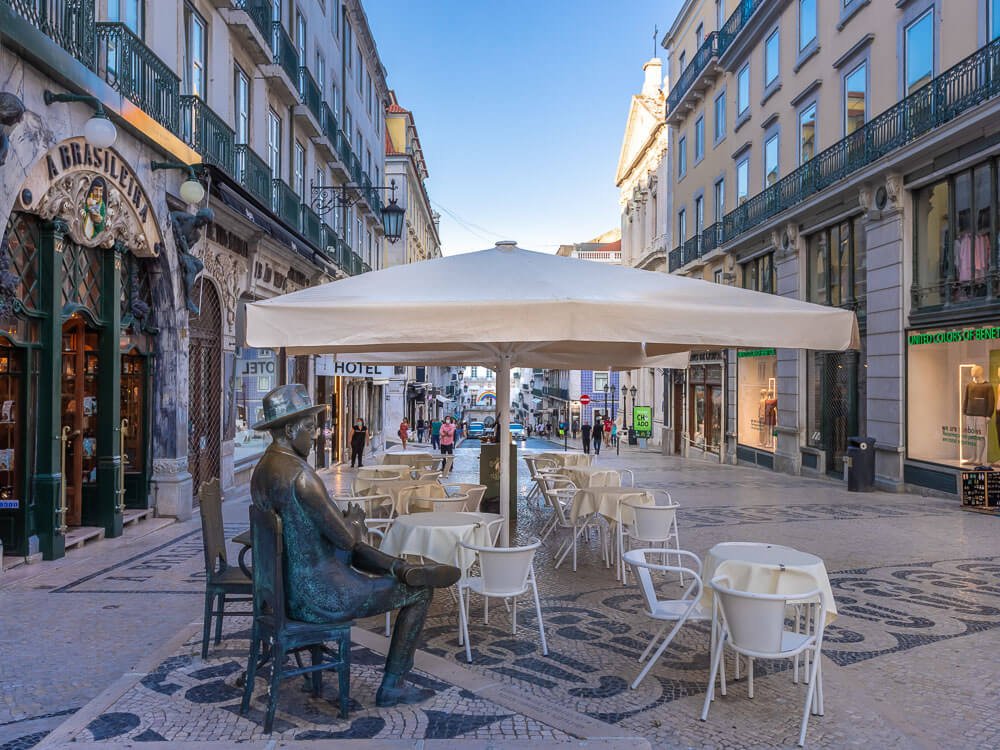
Chiado, located in western Lisbon, is an area known for its great variety of boutiques, bookstores, and cafés that have long attracted intellectuals and artists.
Despite being a commercial hotspot with an upscale vibe, it still retains a strong sense of history that makes it fascinating for visitors. From Michelin-starred restaurants to cultural activities, there’s a lot to explore in Chiado!
However, like Baixa, it’s more suitable for short-term visits or day trips, as it offers fewer residential options compared to other Lisbon neighborhoods.
One of the highlights of the area is Livraria Bertrand, the world’s oldest operating bookstore. Besides that, strolling along Rua Garrett and Rua do Carmo, you’ll find an array of shops, from local crafts to international brands.
For a taste of local history, stop by Café A Brasileira, where the famed writer Fernando Pessoa once enjoyed his espresso. And, if you’re into performances, the São Carlos Theater offers diverse shows, while the Church of São Roque will amaze you with its baroque interiors.
5. Príncipe Real

Príncipe Real, with a hilltop location just north of Bairro Alto, is a unique district in Lisbon that offers a peaceful escape from the usual tourist crowds. It’s a welcoming and sophisticated neighborhood, with residential areas mixed with nightlife venues, perfect for experiencing local life.
With its mix of grand mansions, art galleries, boutiques, and designer stores, Príncipe Real is a fascinating place to explore. It offers attractions focused on sustainability, such as organic markets and handcraft stalls, as well as great LGBTQ+ nightlife, lots of food options, and upscale shops.
Príncipe Real is also known for the São Pedro de Alcântara Viewpoint, a favorite spot for both locals and tourists, and for its green spaces, such as the Príncipe Real Garden and the Botanical Garden, both ideal for quiet strolls among nature.
6. Mouraria

Mouraria, just north of Alfama, is a fascinating district in Lisbon that proudly maintains its multicultural roots. And the best part? It’s an affordable neighborhood that remains relatively undiscovered by tourists!
Mouraria is known for its genuine feel and charm, seamlessly blending historical relevance with active urban life. It offers both historical sites and live music events in local bars, as well as lots of colorful street art that add to its unique character.
Besides that, you’ll find a wide range of food options here, from traditional Portuguese meals to international dishes. After all, there are over 50 nationalities that contribute to its diverse culinary scene!
Overall, Mouraria is a perfect example of how tradition and modernity merge effectively in Lisbon. Its cultural mix offers a unique experience for those interested in exploring different aspects of the city’s heritage, all while enjoying an inclusive community atmosphere and engaging social environment.
7. Parque das Nações
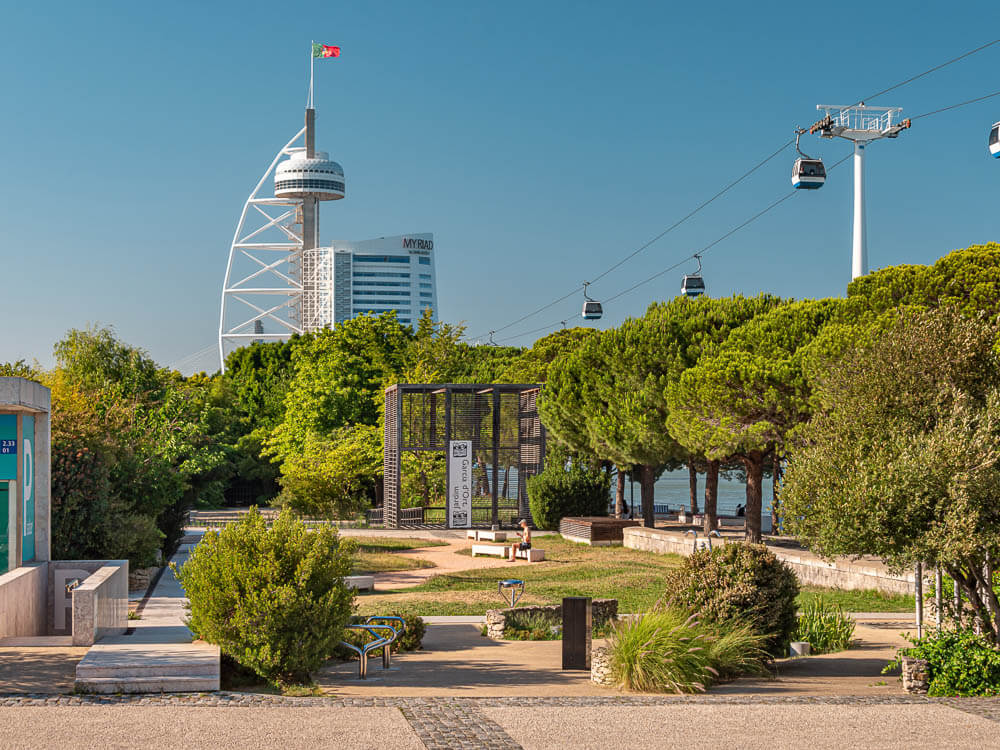
Parque das Nações is a modern district in Lisbon that developed significantly after hosting the 1998 World Exposition. It’s an area renowned for its contemporary architecture, urban planning, and overall high quality of life, with an active community atmosphere.
Known as one of the safest areas in Lisbon, it offers a more quiet environment compared to the busy historical center. Besides that, it provides easy access to a wide range of amenities, such as shopping centers, restaurants, parks, and cultural venues like the Lisbon Oceanarium.
Other attractions in the area include Oriente train station, the Vasco da Gama Bridge, and the Knowledge Pavilion, a must-visit place for children.
With well-designed streets and public spaces, Parque das Nações is ideal for families, professionals, and retirees. It’s also well connected by public transportation to other districts in Lisbon, ensuring more convenience for residents.
8. Graça and São Vicente

Graça and São Vicente are two of Lisbon’s most charming and historically significant districts, blending scenic views with historic streets that offer visitors a genuine taste of Lisbon’s urban landscape.
Perched atop one of Lisbon’s highest hills, Graça features narrow, winding streets lined with old architectural styles, making it a haven for history enthusiasts. It’s also known for its stunning panoramic views of the city, especially from spots like Miradouro da Graça and Miradouro da Nossa Senhora do Monte.
Right next to Graça is São Vicente, a district celebrated for its cultural heritage and great local scene. A key landmark here is the São Vicente de Fora church, which dates back to the 16th century. Besides that, this area is also famous for hosting the Feira da Ladra (or “Thieves Market”) on Saturdays, where vendors sell everything from antiques to crafts.
9. Belém
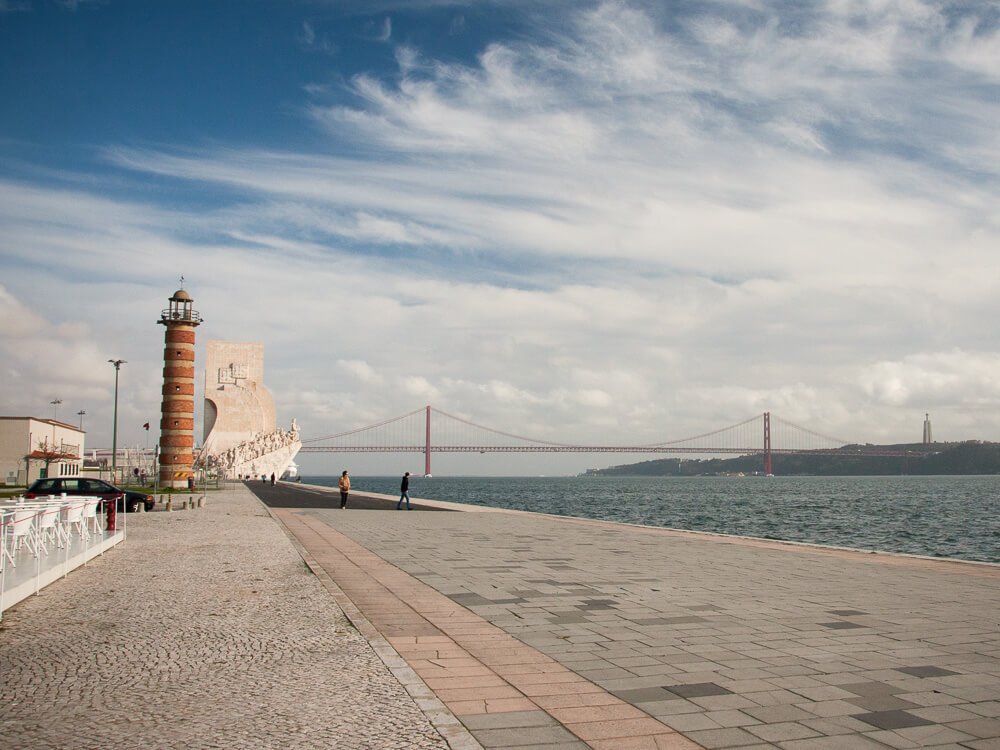
Belém, located about 5 km west of central Lisbon, is a district renowned for its rich history and beautiful riverside setting along the Tagus River. Even though it’s not very close to the city center, it’s easily accessible by public transport or car.
Its main attractions include the Jerónimos Monastery and Belém Tower, both UNESCO World Heritage Sites that offer insights into Portugal’s Age of Discoveries with their stunning architecture and historical importance.
Another must-visit spot there is Pastéis de Belém, a bakery founded in 1837, famous for being the only place that serves the original recipe of pastéis de nata. Sometimes, the lines may be long, but trust me: these custard tarts are totally worth it!
The district also features large gardens like Jardim Botânico Tropical, and cultural institutions such as the Centro Cultural de Belém, which has an incredible collection of artworks from different periods.
Which Lisbon neighborhood do you want to visit?
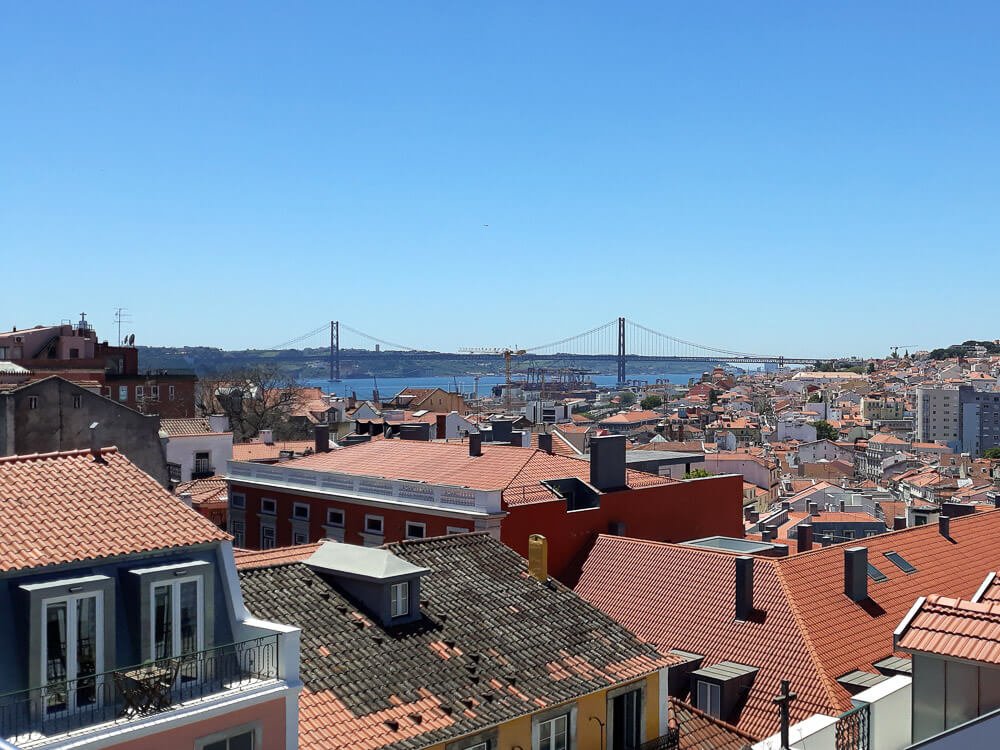
Lisbon is a city with very diverse neighborhoods, each offering its own unique atmosphere and experiences. No matter where you go, there’s always something new and exciting to discover.
Some days, I find myself craving cultural activities, such as museums and galleries. Other times, I just feel like walking through parks or along the riverfront. And I absolutely love that I can do all of these options in just one city.
I hope this guide has been helpful and that you have a fantastic time exploring all the different Lisbon neighborhoods. Have a great trip!



